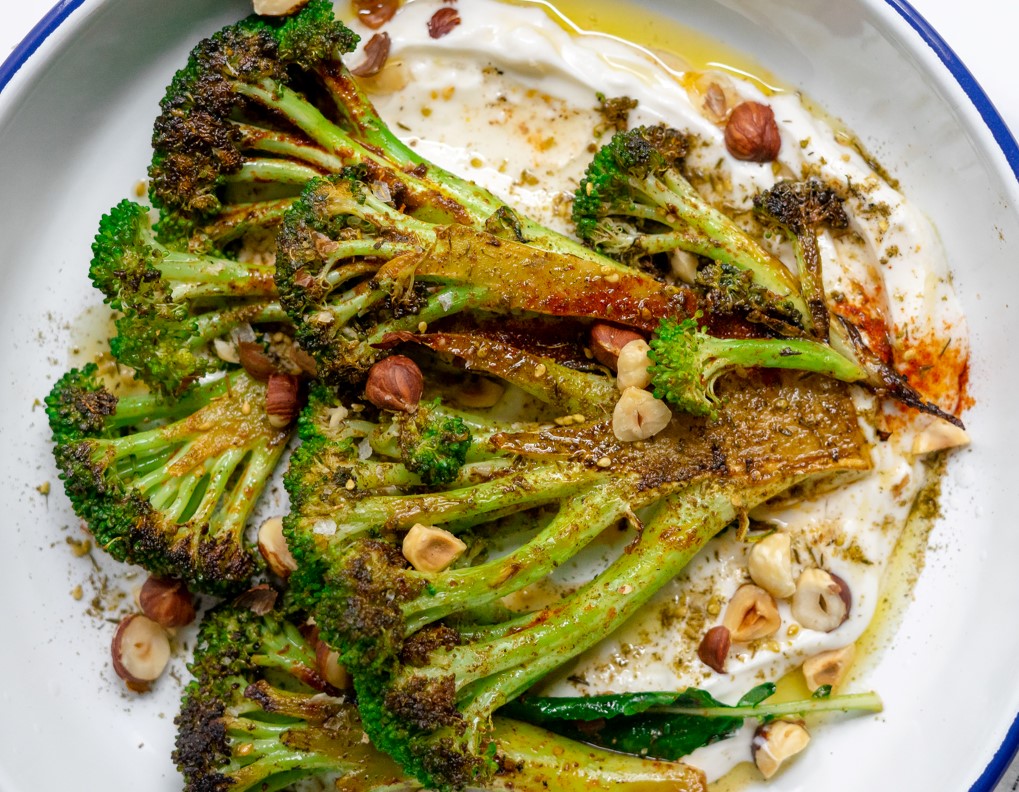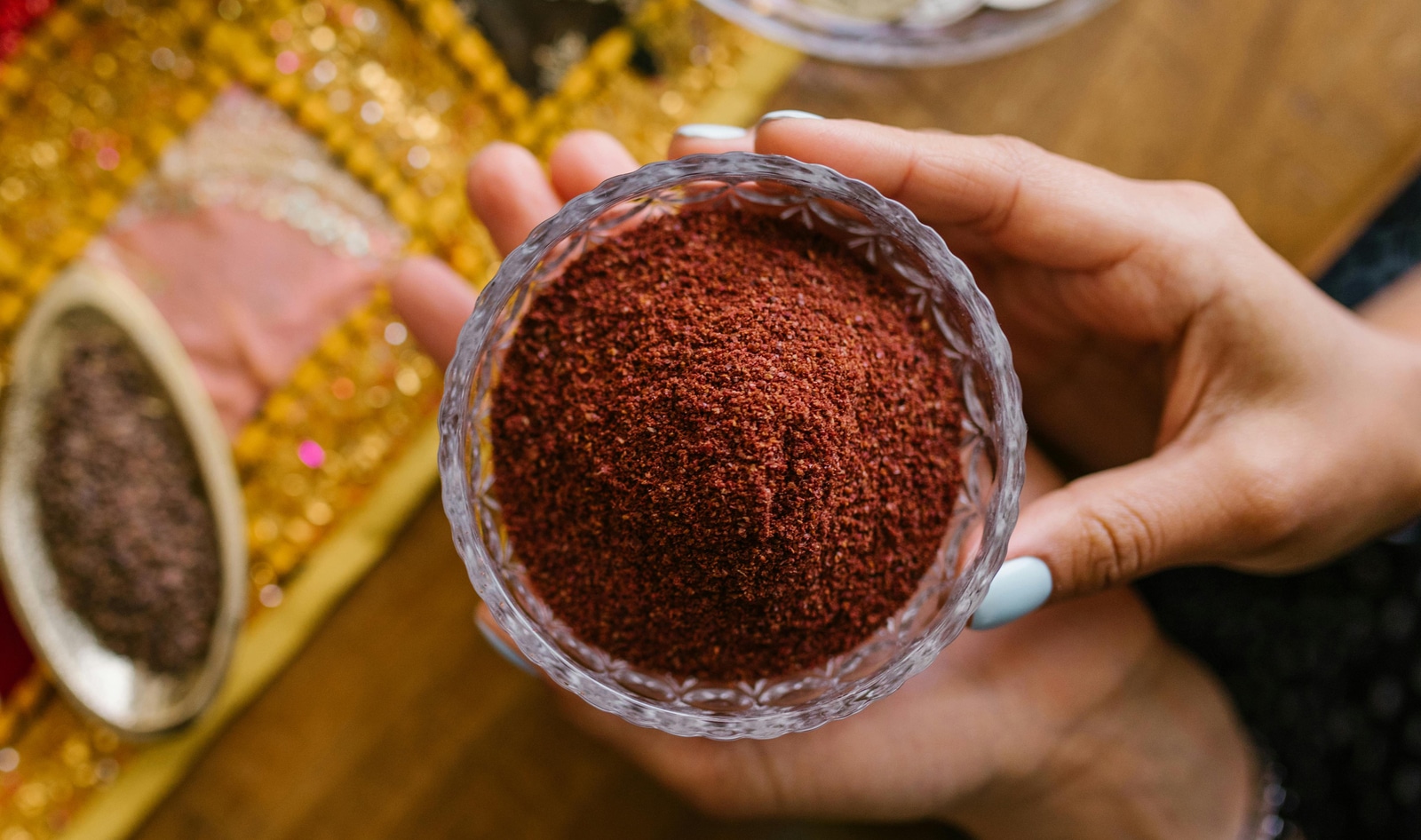
If you’ve dabbled in Middle Eastern cuisine or explored the spice aisle of a global food market, you’ve probably encountered sumac, a vibrant, crimson-red spice that offers a tart, lemony flavor. Often compared to citrus, sumac is derived from the dried and ground berries of the Rhus coriaria plant, making it a close botanical relative of cashews and mangoes.
Its versatility and unique taste have made it a staple in Middle Eastern cooking and an increasingly popular ingredient in kitchens worldwide. Here’s what you need to know about cooking with sumac and incorporating it into plant-based meals.
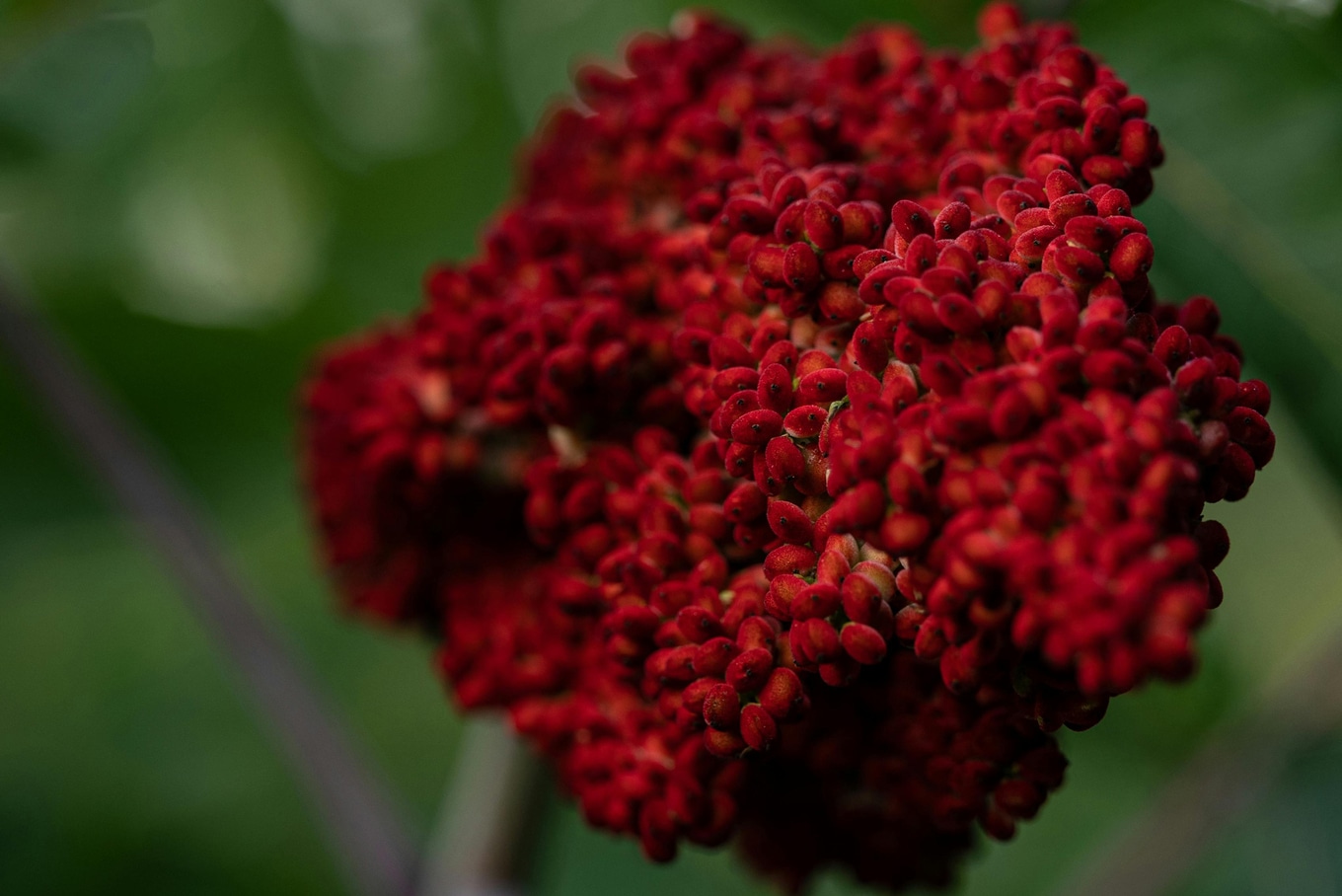 Chris F | Pexels
Chris F | Pexels
What is sumac?
Sumac is a dried and ground spice made from the berries of the sumac plant. It’s commonly used in Mediterranean and Middle Eastern cuisines, especially in dishes such as fattoush salad and spice blends such as za’atar.
The berries are dried and ground into a coarse, reddish powder with a flavor profile that is sour, tangy, and slightly astringent. Its lemon-like acidity makes it a great alternative to citrus, especially in dry rubs or dishes where you want a bright flavor without adding liquid. This makes it particularly useful in salads, roasted vegetables, and spice rubs for grilling.
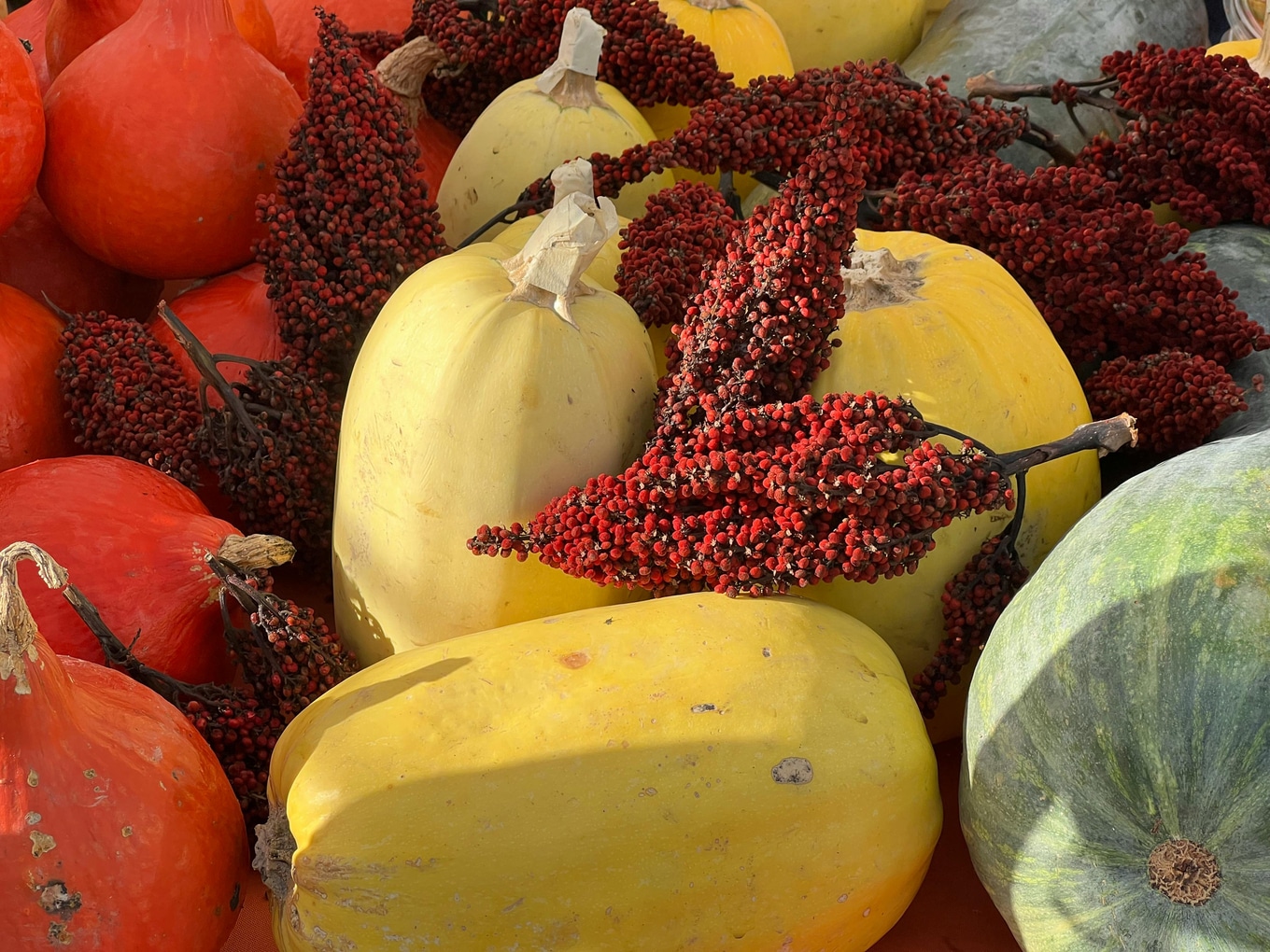 Planka | Pexels
Planka | Pexels
Sumac’s role in traditional Middle Eastern cooking can’t be understated. For centuries, it has been a go-to ingredient for brightening flavors, especially in dishes where lemon juice or vinegar might otherwise be used. It adds both a pop of color and a burst of acidity that works well in savory dishes.
Beyond its culinary uses, sumac is celebrated for its antioxidant properties, which may contribute to anti-inflammatory effects and blood sugar regulation, similar to those found in other members of the cashew family.
Health benefits of sumac
Sumac is rich in antioxidants called polyphenols, which help neutralize harmful free radicals. By reducing oxidative stress, polyphenols protect cells from damage linked to diseases like heart disease and cancer.
One of the key advantages of sumac is its ability to support cardiovascular health. According to a study published in the Journal of Future Foods, “sumac can be used as an anti-cholesterol and anti-inflammatory.” More specifically, sumac can help reduce low-density lipoprotein (LDL)—often referred to as “bad” cholesterol—in particular. This in turn may lower the risk of developing heart disease.
 RDNE | Pexels
RDNE | Pexels
Additionally, sumac’s anti-inflammatory properties can provide relief for people suffering from chronic conditions such as arthritis and asthma by limiting the body’s production of inflammatory chemicals.
It may also play a role in managing blood sugar levels. Clinical studies suggest that sumac can help improve insulin sensitivity and reduce fasting blood glucose levels.
Moreover, sumac’s hepatoprotective (liver-protecting) properties have been shown to shield the liver from oxidative damage. Plus, sumac has notable antimicrobial effects, showing potential in fighting various bacteria and fungi. This makes it a valuable natural remedy for helping prevent infections.
How to cook with sumac
Sumac is incredibly versatile. Its bright, tangy flavor works well in both savory and sweet dishes. You can use it in marinades, salad dressings, dry rubs, or as a finishing garnish. In Middle Eastern cuisine, it’s often sprinkled over hummus or labneh, a tangy dip that can be made dairy-free by using unsweetened vegan yogurt.
Sumac can also be added to grilled vegetables or sprinkled over flatbreads for an extra layer of flavor. Its tartness complements hearty dishes such as roasted cauliflower, lentils, and even chickpeas.
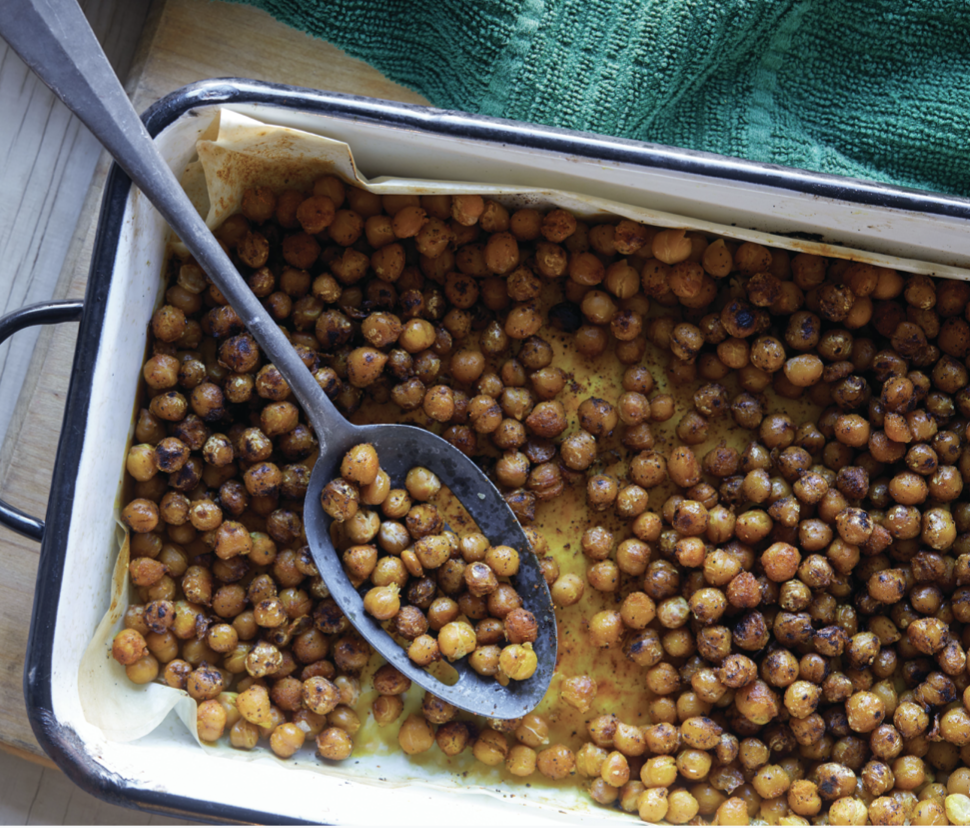
If you’re looking for inspiration, consider adding sumac to dishes such as roasted potatoes, grilled eggplant, or a fresh tomato salad.
While sumac is traditionally used in dishes like kebabs and roasted meats, it’s equally at home in plant-based dishes. Its citrusy notes can elevate the flavors of lentil stews, couscous, or grain bowls.
In fact, sumac is an excellent ingredient for vegan dishes that rely on umami-rich flavors. Its tanginess pairs well with hearty ingredients like beans, mushrooms, and tofu, adding depth to otherwise neutral flavors. Sumac can also be used in sweet applications, such as mixed into fruit salads or dusted over citrus desserts for an unexpected twist akin to Tajin.
Recipes that use sumac
If you’re new to sumac, try incorporating it into simple recipes that highlight its unique flavor. Here are a few plant-based dishes to get you started.
1Stovetop Wheat Pita Bread
These classic bread pockets serve as a blank canvas for seasoning. We suggest a sprinkle of sumac or za’atar.
Get the recipe
2Plum and Radicchio Salad With Tahini Yogurt Dressing
This salad features a tangy tahini yogurt dressing, where sumac adds a bright citrusy note that perfectly balances the bitterness of radicchio and the sweetness of plums.
Get the recipe
3Shaved Brussels Sprouts With Za’atar, Lemon, and Pine Nuts
Chef Tal Ronnen is masterful with making vegetables the star of the show and these shaved Brussels get a hit of flavor from sumac-heavy za’atar.
Get the recipe
4Za’atar-Seared Broccoli Steaks
Cauliflower isn’t the only vegetable that can be served steak style at the center of the plate. With the help of za’atar, broccoli is elevated to steak status in this decadent recipe.
Get the recipe
5Glazed Honeynut Squash With Mint and Dairy-Free Feta
This warm, sumac-spiced squash is topped with a refreshing mint-feta topping and bursts of sweet-tart pomegranate seeds, making it a perfect dish for any special gathering.
Get the recipe
This post was originally published on VegNews.com.



